Due to the high tariffs for the services of gas supplying organizations, economical gas consumption is a sore spot for most families living in a house with gas heating. Gas bill amounts, especially in winter, can be unrealistic, right? Are you thinking about how to save gas in a private house without sacrificing a comfortable microclimate?
We will try to help you with the solution of this issue - in this material we will tell you about real ways of saving, tested by many consumers in practice. We will also consider alternative heat sources that can supplement or completely replace gas in a private house.
The content of the article:
-
Effective gas saving options
- Method # 1 - installing a gas meter
- Method # 2 - reducing heat losses
- Method # 3 - automation of the heating process
- Method # 4 - replacing ineffective equipment
- Method # 5 - modernization of the ventilation system
- Method # 6 - using alternative sources
- Method # 7 - arrangement of underfloor heating
- Method # 8 - optimizing water heating costs
- Additional tips for savings
- Conclusions and useful video on the topic
Effective gas saving options
The issue of economical gas consumption must be approached in a comprehensive manner. Plus, it is important to use only legal "white" methods, so as not to have unnecessary trouble with the regulatory authorities. Consider the most effective ways to wisely use and save gas, tested by more than one consumer who uses gas equipment for home heating.
Method # 1 - installing a gas meter
Let's start with the banal. The first thing to do is to install a gas meter in the house, if one is not already available. Without this device, all other actions are meaningless: gas consumption will be calculated according to average rates, which is obviously unprofitable. The meter will allow you to pay only for actually consumed natural gas, and this amount is usually an order of magnitude less.
There are these types of flow meters:
- rotary;
- turbine;
- membrane;
- vortex.
The required standard size is determined depending on the maximum fuel consumption of all devices in total. You can see the approximate gas consumption per hour of operation in the technical passport of the equipment. At choosing a counter you should be guided by the number of gas appliances used in the house
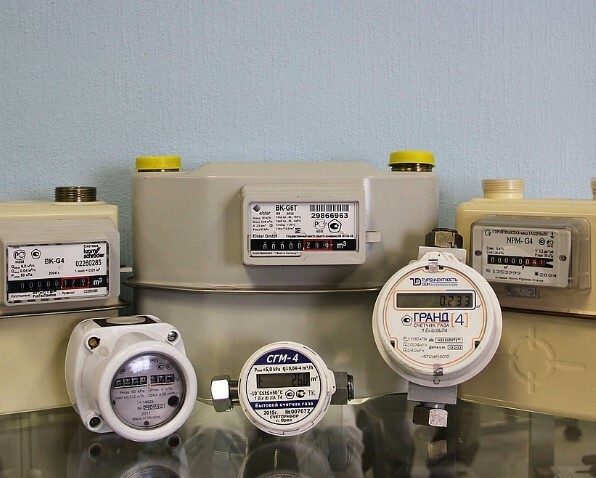
In everyday life, membrane-type meters are most often used. They are economical, easy to operate, and highly accurate.
Each meter has its own nominal capacity, marked with a special marking:
- G1.6 1.6-2.5 m³ of energy carrier is passed through;
- G2.5 - 2.5-4 m³;
- G4 - 4-6 m³;
- G6 - 6-10 m³;
- G10 - 10-16 m³.
If the house has a gas stove, a water heater and a boiler, you must choose a device marked G6 or G10.
Before using other methods, you need to start keeping track of expenses and regularly write down the meter readings in a separate notebook. These records will help monitor fuel consumption and evaluate the effectiveness of attempts to save gas when heating a private home.
Method # 2 - reducing heat losses
The second and main step that will significantly reduce consumption is analysis and reduction of heat loss.
This need is due to the fact that some of the heat in the house goes through the walls, roof and windows. A certain amount of heat energy is lost through the ventilation system along with the outgoing air.

Serious heat loss negates the efficiency and economy of any, even the most modern, heating system. The more the leakage, the more energy of the equipment is spent on heating and the more noticeable the fuel consumption becomes.
In order to eliminate such a problem, it will be necessary to carry out a set of measures for thermal insulation.
All surfaces that can transmit heat need to be insulated:
- floor;
- walls;
- ceiling;
- roof;
- facade;
- doors;
- window.
The simplest option insulation of external walls - sheathing with foam. You can also make a false wall indoors by laying mineral wool for it. The ceiling is insulated from the attic side with the same materials - mineral wool, polystyrene or expanded polystyrene.
To insulate the floor, the material is laid under the screed or wooden flooring. As a heater, ordinary sawdust, ecowool, mineral wool, polyurethane foam, penofol are suitable.
Roof sandwich panels will help prevent heat leakage through the roof. They consist of an external cladding in the form of two profiled metal sheets and a layer of thermal insulation 10-15 cm thick, glued together by cold or hot pressing.
If it is not possible to insulate the house from the inside, we recommend that you familiarize yourself with outdoor insulation technologies.
It is more expedient to replace old wooden windows with metal-plastic structures with double or triple glass units. Window systems with multi-circuit sealing, glass with a special coating keep heat perfectly.
Entrance doors should also have good energy efficiency. The ideal option is a double model with a vestibule. If the purchase of energy efficient windows and doors is not possible, the old structures should be sealed by carefully sealing all the cracks.
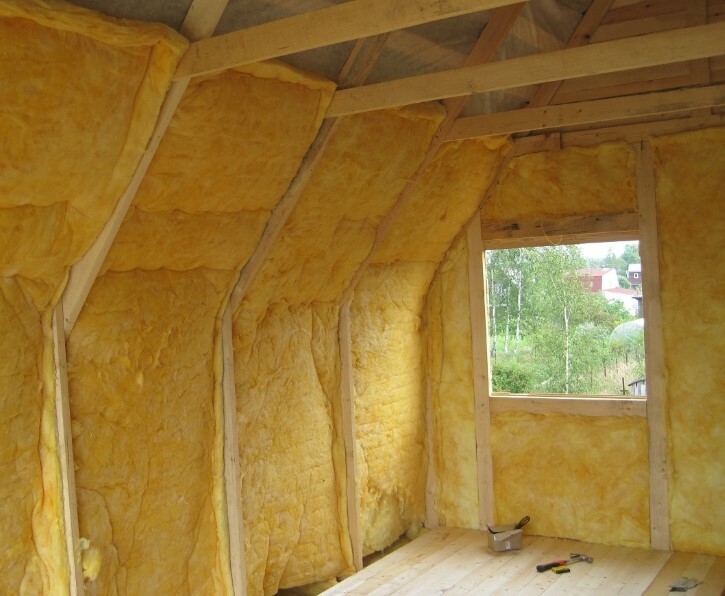
Mineral wool, although expensive, is the most reliable and high-quality material. It is she who is advised to use experts to insulate a private house.
It is important to pay attention to the ventilation rules. It is advisable to ventilate the rooms with open windows no more than 5-10 minutes. During this time, a sufficient amount of fresh air will enter the room and a lot of heat will not escape. If necessary, you can repeat the event once every few hours.
To determine the places of the greatest heat loss, a thermal study is carried out at home. This is done by professionals. After performing an accurate analysis, they provide a detailed map of the heat loss in a particular house.
Insulation requires significant financial investments, but this is one of the most effective methods of saving energy. With high-quality work and maximum protection of surfaces from cold air, heating costs can be reduced by up to 50%. An additional bonus will be the soundproofing of the premises, which is especially important if the house is located near a busy highway or roads.
Method # 3 - automation of the heating process
The temperature in the house depends on the weather conditions, the type and area of the room. According to research, a comfortable indicator for a person is not higher than 21 ° C. The boiler automation system will prevent excessive hypothermia or overheating of the room.
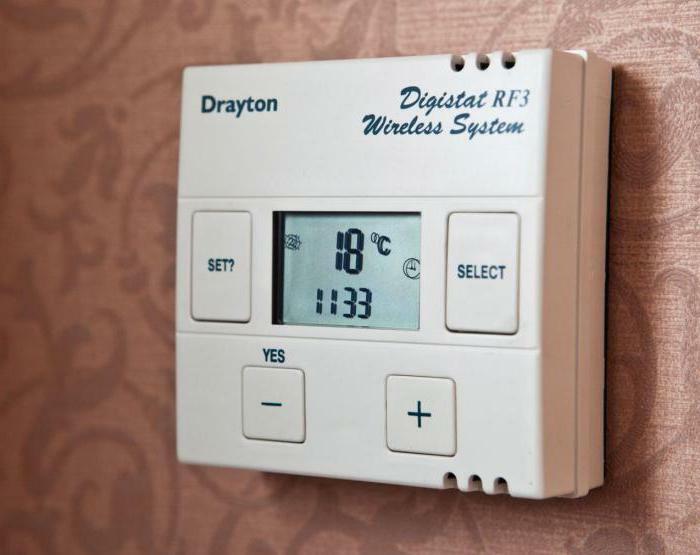
Thermoregulatory devices automate the heating process in the house - they will help to avoid overheating of the rooms, will automatically reduce the load on the boiler when the sun starts to warm up outside the window
The devices included in its composition regulate the fuel supply, maintaining a stable temperature, taking into account changes in external factors.
These include:
- Weather Sensors. Installed outside the house. The temperature of the outside air is monitored and, in case of any changes, they give a signal to the regulation system about the need to increase or decrease the fuel supply to the gas boiler.
- Room thermostats. The air temperature in the room is recorded by monitoring the level of heating of the coolant in the radiator. When the set points are reached, the boiler turns off, and after falling by 1-2 ° C, it turns on again.
- Programmers. Allows you to set the desired temperature marks in the premises by hours, time of day, days of the week. With their help, you can program work according to a convenient schedule. For example, in the period from 8.00 to 16.00, while no one is at home, set one indicator, in the evening from 16.00 to 22.00 - another, at night from 22.00 to 8.00 - the third.
The devices are installed on the wall near the gas supply source or directly on the heating radiator.
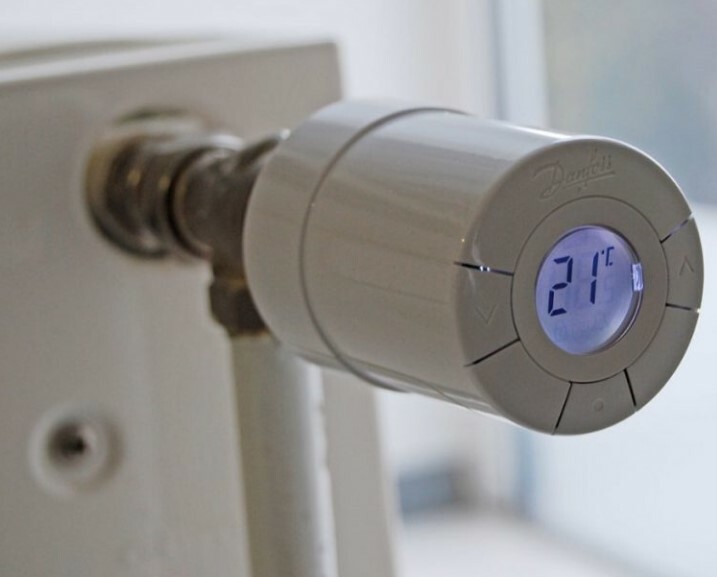
Thermostats on radiators will allow you to maintain a certain temperature in a particular room without heating all rooms with the same power. For example, set lower marks in the living room and higher marks in the bedroom at night, and vice versa.
Installing thermostats is one of the easiest ways to save gas. Interacting with the heat carrier supply source, these devices contribute to a more rational use of the resource. The level of fuel consumption of equipment with an automation system is reduced by 10 to 20%.
Method # 4 - replacing ineffective equipment
Gas consumption is largely determined Efficiency and the efficiency of the main heat source. Therefore, if an old boiler or an unprofitable model that consumes an exorbitant amount of fuel is installed in the house, it is better, if possible, to replace such equipment with a more energy efficient one. This is especially true of Soviet boilers, the efficiency of which barely reaches 60%.
It depends on how to approach the choice of a boiler whether the gas consumption in the house will decrease. The unit must completely burn fuel, giving out the maximum amount of heat.
When buying, you need to consider:
- efficiency value;
- burner and heat exchanger design;
- flue gas temperature;
- the thickness of the insulation;
- type of allocation;
- the cost of the device.
Do not flatter yourself with cheap models: the 1-2 stage design of their burners can limit the amount of heat produced. Devices with modular burners equipped with an electronic control system show great efficiency.

The efficiency of modern heating devices is from 90%. This means they consume much less fuel and are more efficient.
Among modern models, the leader in efficiency is considered condensing gas boilers floor and wall type with efficiency up to 96%.
Compared to other types of gas equipment, they save up to 20% on fuel. High-tech devices use waste gases to generate additional heat.
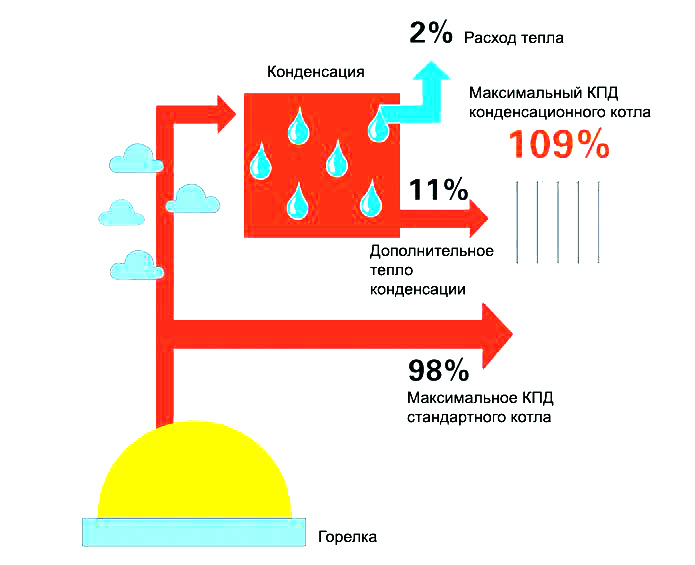
The main advantages of condensing boilers are low flue gas temperature, minimum quantity harmful emissions, the possibility of stable operation with insufficient gas pressure, increased level soundproofing
In addition to choosing an economical boiler model, you need to pay special attention to the installation diagram of the heating system in the house. It is important to accurately calculate the optimal power of the equipment (1 kW of energy should fall on 10 m² of the heated area), select the correct piping system for distributing the coolant.
Method # 5 - modernization of the ventilation system
Another effective way to save money is installation air handling units with recuperation. These devices efficiently remove waste air masses and return heat to the room, allowing you to optimize the fuel consumption required for heating.
Here's how gas consumption can be reduced with a recuperation system:
- heat exchangers are installed in the inlet ventilation openings, which take out moist and warm air masses;
- heat exchangers-recuperators are connected to the inlet ventilation pipes;
- as the warm air moves, the recuperators warm up the cold streams coming from the outside;
- fresh air enters the room already slightly warmed up.
Thus, recuperation system maintains natural air exchange, maintains optimal temperature and humidity conditions, does not release excess heat into the pipe. By reducing heat losses, less energy is required to maintain a normal indoor climate.
Method # 6 - using alternative sources
Alternatively, go a more radical way and abandon the use of gas in favor of more economical alternative sources of heating.
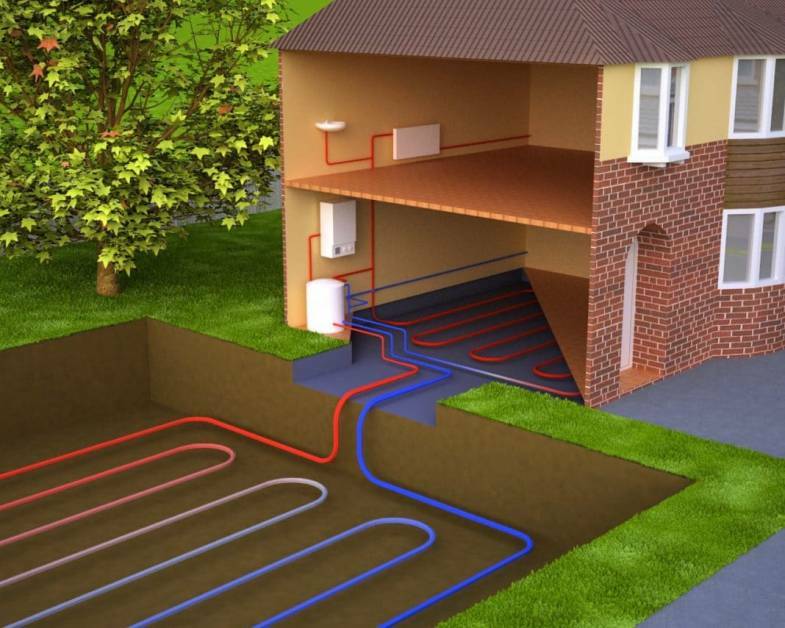
Depending on the types and characteristics of specific equipment, alternative sources can be used separately or as an addition to a gas boiler. In the second case, the boiler will cover the main power, and other sources will support its operation in the off-season, moments of peak loads, after exceeding the planned gas consumption
Let's consider in more detail the optimal alternative heat sources.
Natural energy of the sun
Recently, instead of the usual systems for arranging home heating, solar panels or collectors have often begun to be used. Such devices use energy of sun - the natural and most environmentally friendly form of energy.
System solar heating consists of vacuum manifold, pump, controller, storage tank for hot water. With collectors installed on the roof, the sun's energy is converted into electricity, stored in batteries and heats the water, which reaches 70 ° C and circulates through the system.
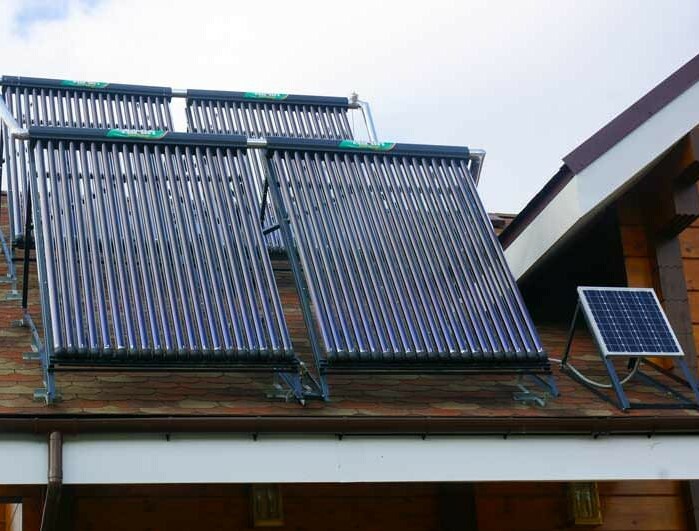
Using solar panels or collectors, the owners of private houses organize not only heating, but also hot water supply to the premises.
The efficiency of this heating method is directly proportional to the number of sunny days and the intensity of sunlight. With proper organization, such heating helps to significantly save on the main heating system of the house. To do this, it is necessary to integrate the elements of the solar system into the traditional scheme.
High efficiency heat pumps
One of the most economical types of heating is heat pump systems. The installation of such devices is expensive, but after a certain time, a significant economic effect will be noticeable.
Compared to gas boilers, the cost of heat generated by pumps is 2.5 times less. Using only 1 kW of electricity, the heat pump produces an average of 3-5 kW of thermal energy.
There are different types of heat pumps, which differ in the type of heat source used:
- water - pumps take heat from underground, surface waters, earth;
- air - the ambient temperature is used;
- Earth - they take the renewable heat of the earth, the system is mounted below the freezing level;
- derivative (secondary heat) - for example, the heat from a central heating pipeline.
The equipment is capable of providing full heating and hot water supply at home. In addition, the units can air-condition the premises during the summer.

The principle of operation of heat pumps is based on the use of thermal energy from underground waters, reservoirs, soil, air. Like refrigeration units, they take, accumulate, enrich heat, transferring it to the coolant
If there are frequent power outages in the area, it is not worth installing heat pumps, since they need electricity to operate the compressor.
Method # 7 - arrangement of underfloor heating
Underfloor heating systems are highly efficient and economical. They are used both as the main and additional heat source in a private house, including when heating with a gas boiler.
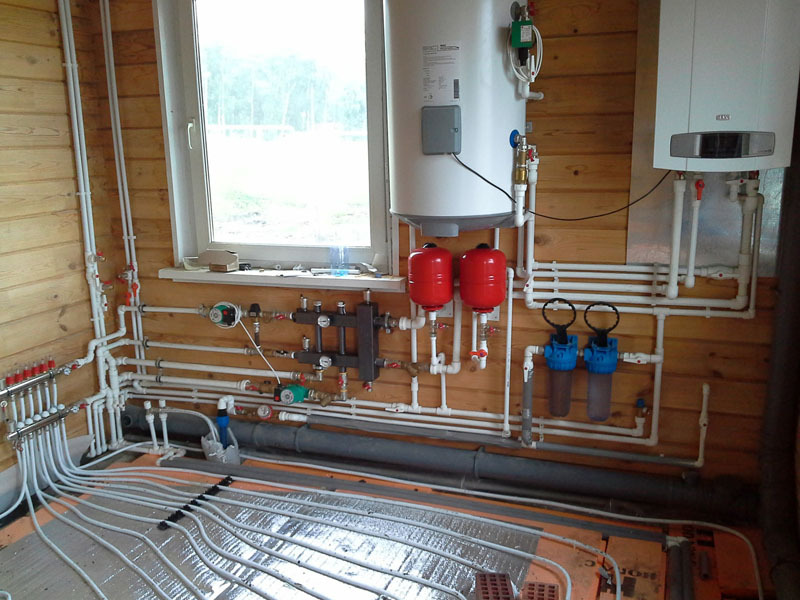
Underfloor heating systems allow you to achieve more efficient heat transfer from the energy carrier. They can be combined with different floor coverings, installed on DSP and other materials
Warm floor can be water, electric or infrared. To choose right the best option for a warm floor should take into account a number of criteria, including, among other things, the characteristics of the room and the type of flooring.
It consists of several layers, forming a "cake" of the following elements:
- base surface;
- a layer of waterproofing and heat-insulating coating;
- system of pipes and communications;
- fixing concrete mortar;
- flooring.
The device evenly distributes heat over the entire area and provides a comfortable microclimate in the room. Due to the absence of convective flows, the amount of dust in the air is significantly reduced.
Method # 8 - optimizing water heating costs
In addition to heating, most private homes use gas to provide hot water. To reduce overall costs, it is necessary to reduce the amount of resources used in this direction.
In this case, you can use one of several effective methods. The first option is to connect a separate flow-through gas heater. It allows you not to waste gas, as it only works when the hot water valve is opened.
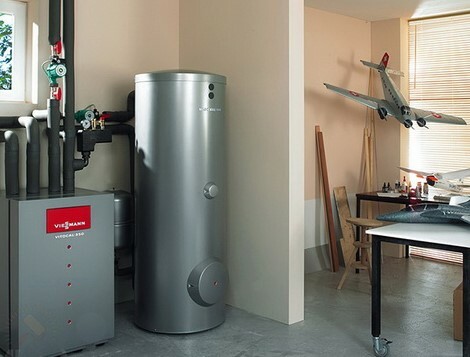
In order to save gas, you can use thermally insulated storage tanks operating on the principle of a thermos. Due to the fact that the temperature is maintained in them for a long time, the water will not need to be constantly heated
The second option is to install indirect heating boiler in one circuit with the heating system or use solar collectors for water supply. If you use different methods in combination, the cost of paying for gas can be reduced by 20-25%.
Additional tips for savings
In addition to the methods discussed above, there are several related tricks, when using which it is possible to achieve the desired savings.
You should adhere to these rules:
- do not cover radiators with decorative panels, blackout curtains, furniture, clothing;
- at least once a year it is necessary to clean the boiler heat exchanger from accumulated dirt and dust;
- if the equipment is installed in an unheated room, it is recommended to perform high-quality insulation of the boiler, boiler and outgoing pipes;
- it is advisable to install special energy-reflecting screens made of aluminum foil between the radiator and the wall;
- when using gas to heat water, it is worth installing economical shower heads;
- if the gas water heater does not work, the burner should not be in an active state.
Before the start of the heating season, you need to check the system every time and eliminate all identified deficiencies. Common problems include air locks, leaks at the joints of structural parts.
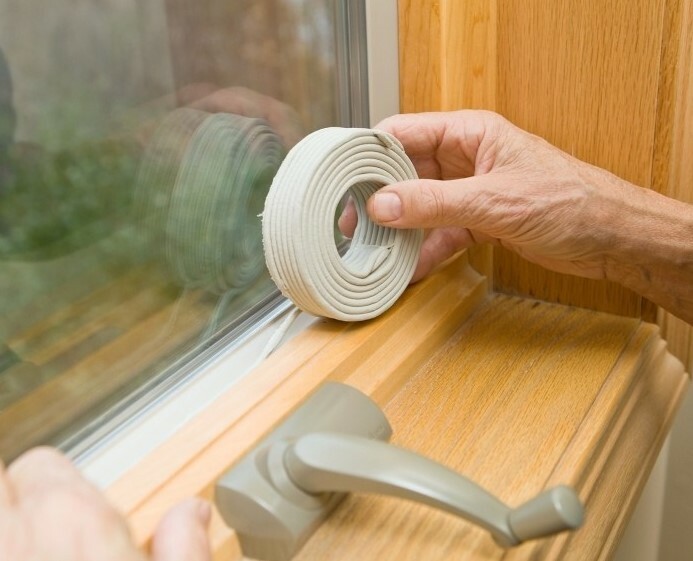
In order to save gas to the maximum, it is necessary to constantly monitor the condition of the places of possible heat leakage - to seal with foam rubber strips cracks in windows, tighten door hinges, additionally upholster doors, blow out borders around inlets and outlets with foam pipes
Saving should be economical, so it is important to control gas consumption everywhere, including in the kitchen. In the process of cooking on the stove, the flame should be regulated at each stage of cooking, at the right time, reducing the intensity of combustion.
For faster cooking and less gas consumption, it is recommended to cover the dishes with a lid, use special pots with grooves on the bottom, teapots with a whistle.
Conclusions and useful video on the topic
Life hacks of consumers to reduce the cost of heating a private house by up to 60%:
Advantages of using a thermostat, features of connecting to a gas boiler:
Overview of alternative heat sources:
There is no one-size-fits-all solution to save gas. You need to experiment, apply different methods and evaluate their effectiveness by comparing the previous counter readings with the current ones. The implementation of the proposed options provides for a whole range of works, sometimes costly and time consuming. But it is worth it, since much smaller numbers in bills will soon recoup the investment.
According to experts, the thermal insulation of a house gives up to 40% gas savings, the installation of thermostats and a programmer - up to 10-20%, the installation of a high-quality boiler - up to 20%. By combining several methods, you can achieve significant results and in the future save a lot of money on heating.
What ways of saving do you use? Share your secrets of low gas consumption with other visitors to our website in the comments section.
If you still have questions after reading this publication, or you cannot figure out the intricacies of the embodiment one of the considered ways of saving, ask our experts for advice - the feedback form is located at the bottom.


